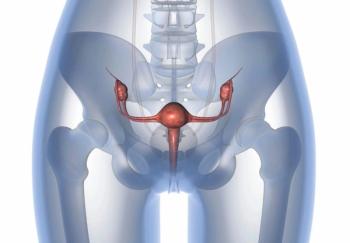
Optimizing Preclinical Data for Seamless Translation in Clinical Scenarios
According to Greg Thurber, PhD, target-mediated uptake is the biggest driver of efficacy for antibody-drug conjugates as a cancer treatment.
At the 16th Annual World Antibody-Drug Conjugate (ADC) Summit in San Diego, CA, experts ranging from oncologists to chemical engineers congregated to discuss the most prominent current ADC news. Among them was Greg Thurber, PhD, a professor in chemical engineering at the University of Michigan School of Biomedical Engineering.
Following Thurber’s seminar titled “Contextualizing learnings from translational profiles of approved ADCs to unlock best approaches to preclinical dosing in mouse models”, he spoke with CancerNetwork® about the overall field of ADCs.
As many experts said, and as was the general sentiment at the Summit, Thurber echoed that ADCs have advanced, as evidenced by some of the recent approvals that have come through. One example,
During his seminar, Thurber discussed how to make sure that preclinical data is translatable to clinical settings. He also spoke about a framework that takes various factors, such as immune effects, macrophage uptake, or payload release, among others, and compares them with each other.
Transcript:
We’ve seen a lot of progress and a lot of new approvals, and there’s a lot of excitement in the field of ADCs. One of the challenges the field has struggled with in previous years, because it’s taken a while to get to the current point, is why some molecules look so promising in preclinical models and then end up failing in the clinic. The take-home message from my talk was that if we dose these preclinical models at the correct level, close to the clinically tolerated doses, then the results do match what we see in the clinic. That could be a good marker moving forward to select molecules that will have success.
The other aspect that I discussed was some of our more recent work looking at multiple target-independent mechanisms of action, because there are a lot of reports in the literature and in mouse models of how target-independent effects might be playing a role in the clinic. In that work, what we did was we took all these different factors, whether it’s immune effects, extracellular protease cleavage, macrophage uptake and payload release, and free payload in the blood, and put all of them into a single framework. This is another advantage of the simulations—we can take clinical data, in vitro cellular data, and preclinical animal data, put them all in the same framework, so we have an apples-to-apples comparison. That allowed us to look at the magnitude of these impacts. This helps put the clinical data into context. One of the important things that came out of that, however, was that the target-mediated uptake is the biggest driver of efficacy. All the effort that’s being put into identifying the right targets and getting local delivery into the cells is worth it in the end because that’s going to far outweigh any of these other effects. But those other effects can be important, and they can help us understand some of the clinical data more clearly.
References
U.S. FDA approves EMRELIS™ (telisotuzumab vedotin-tllv) for adults with previously treated advanced non-small cell lung cancer (NSCLC) with high c-Met protein overexpression. News release. AbbVie. May 14, 2025. Accessed November 11, 2025. https://tinyurl.com/34atzbsv
Newsletter
Stay up to date on recent advances in the multidisciplinary approach to cancer.






















































































